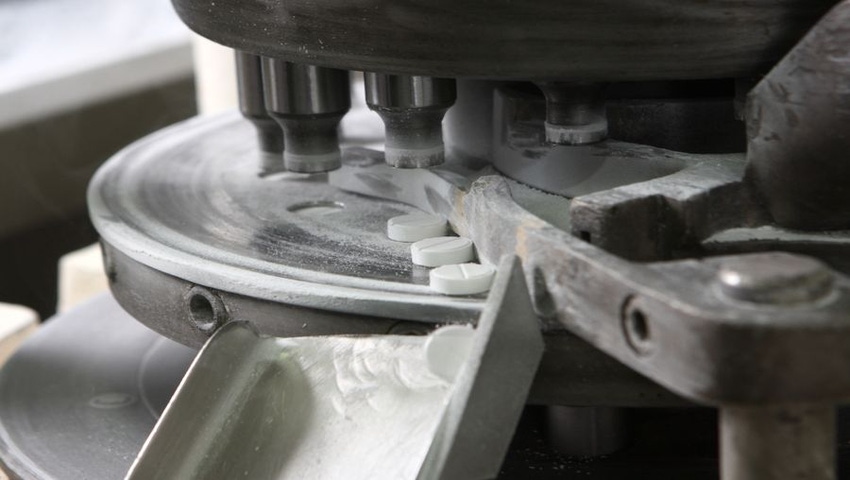A look back at the history of tablets shows how this delivery form came to dominate current pharmaceutical and supplement markets.
June 6, 2016

Most people do not think about the history of pharmacology or the development of single dosage forms of natural or synthetic concoctions for human ingestion when they select a supplement or over-the-counter (OTC) medication. The original pharmacopeia predate the birth of Christ by at least 27 centuries, and the first originated in China where anti-malarial plants containing various alkaloids were identified and catalogued. Additional writings from the Egyptians, who practiced all sorts of alchemy, accompany writings of the Greeks, who identified and purified various mineral salts for use as prepared drugs. The world of the ancients was filled with evidence of advanced understanding of the values of medicinal plants, from whence later sprang up the modern pharmacy we employ today containing derivatives of aspirin, digitalis, alkaloids, ephedrine, caffeine and a host of other widely used compounds.
In the 16th century, essentially from 1546 to 1618, new pharmacopeia were developed and published by scientists in Germany, Switzerland and England. After the publication of the London Pharmacopeia, the whole of England adopted its guidelines and references and it became the first example of a national standard. What followed was the establishment of pharmaceutical apothecaries under authority of King James I of England, requiring competency and education of the art of maintaining and dispensing apothecary wares.
In 1841, the Pharmaceutical Society of Great Britain was founded, was along with a mandate that pharmacists be trained in the understanding and practice of their art. As the scientific evidence of the medicinal value of various natural products was established, careful attention to detail in creating measured doses of extracts from these plants became mission critical. Botanicals such as digitalis, which increased cardiac function and reduced the dreaded disease of “dropsy" (known in modern day as edema), needed careful dosing or could be fatal.
As the 19th century emerged, chemical knowledge of the structure of compounds increased greatly, as did the capacity of extraction. Morphine was successfully extracted from the poppy-opium plant in 1804; colchicine was isolated from a crocus plant; quinine was extracted from the bark of cinchona in 1820 (which saved many from malaria). With the development of chloral hydrate (a sedative) in the mid-19th century followed by the drug of all times, aspirin (salicylates from the bark of the white willow tree), the world of tablets became of dynamic importance.
The development of measured dosing of these powerful potions became essential to prevent undesired side effects, so the science of tablet compression was of necessity on a parallel track. In 1843, English inventor William Brockedon was granted a patent for a device capable of “shaping pills, lozenges and black lead by pressure in dies." This was the progenitor of the modern-day tablet press, which not only manufactures medicines and supplements, but can also produce currency in the form of coins.
Even though the Egyptians made hand-crafted little balls of medicinal plants mixed with honey or grains, and the Greeks did the same, it was the Roman author Pliny who named the dosage form “pills," calling them pilula in the first century A.D.
The pills of today are of various shapes and sizes, often embossed or demarked with product identification, and sometimes enrobed with clear protein-based coatings and colors. Roughly two-thirds of all medicines administered through prescription or OTC are in tablet form, with the balance in capsule, liquid or softgel format.
The most important tablet issues for consumers today are portability, efficacy and shelf life (potency).
For manufacturers of dietary supplements, the last two components of the consumer “punch list" are essentially mandated by adherence to current FDA GMPs (good manufacturing practices). We have a responsibility to assure consumers that the product is of value by demonstrating that the potency on the label is in the product, that this potency is stable for a usual amount of time under appropriate storage and handling, and that the product is properly made so as to ensure absorption and utilization of the active ingredients.
I am often asked by consumers how to tell if a tablet is properly made. Assuming you are not dealing with a timed-release tablet, which can slowly release contents into gastric fluids for up to a 12-hour period, a normal tablet placed in 8 ounces of warm water (warm to the touch but not boiling) should not exceed 30 minutes to dissolve. Gentle stirring every five minutes—without touching the tablet with the stirring device to help ensure the entire surface area of the tablet is covered in water—should easily demonstrate disintegration within that period of time in a kitchen or bathroom. If a tablet shows no evidence of disintegrating in that period of time, there is a problem with the formulation in that it was either never tested or the quality system failed its task.
So next time you take a pill, just be grateful that they aren’t like they were in the 19th century, when some apothecary folks would take to painting tablets with gold or silver before administration—which meant they were beautiful going in, and in some cases going out—but were largely ineffective in the digestive tract.
Mark A. LeDoux is founder, chairman and chief executive officer of Natural Alternatives International Inc. (NAI), an organization with world facilities in the United States and Switzerland engaged in the research, design and manufacture of nutritional supplement programs and products for multinational clients.
About the Author(s)
You May Also Like






.png?width=800&auto=webp&quality=80&disable=upscale)